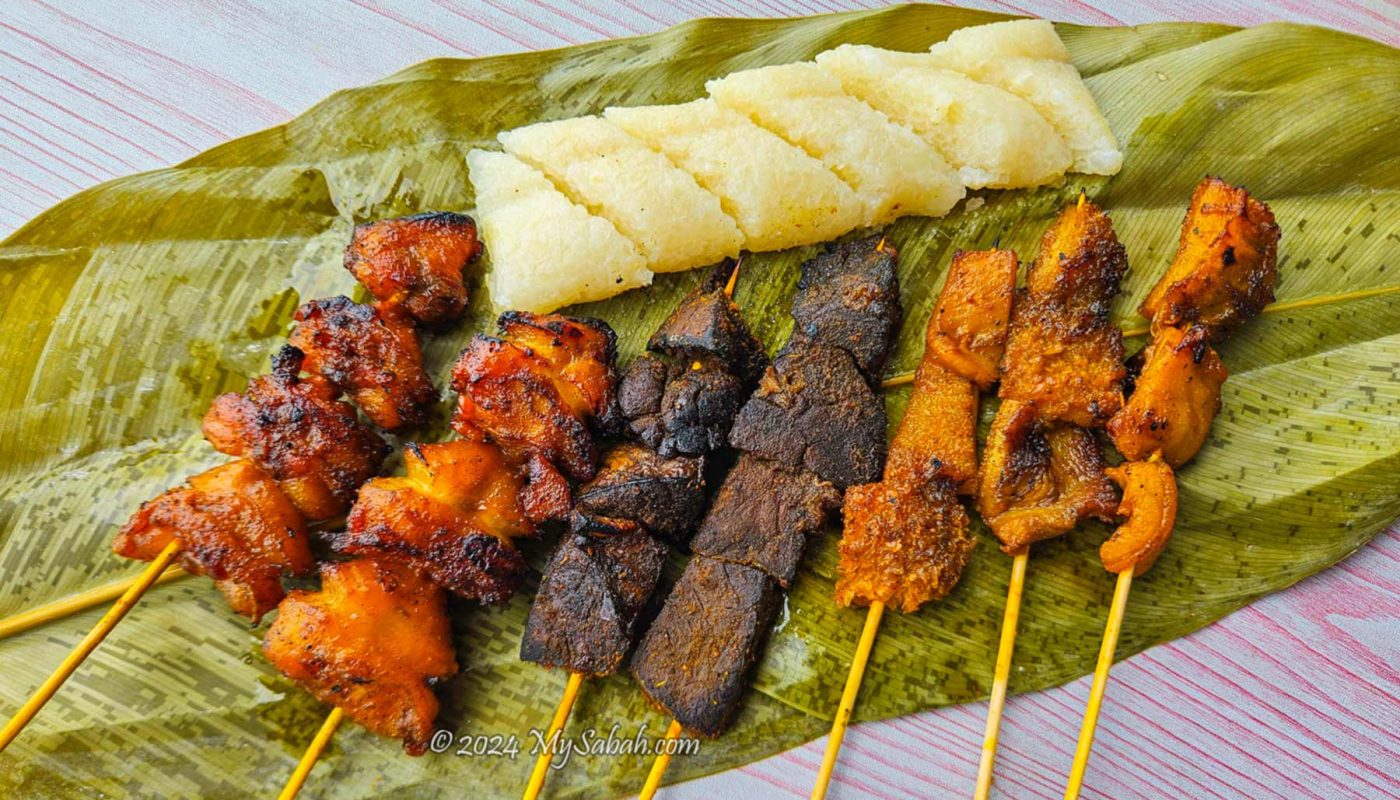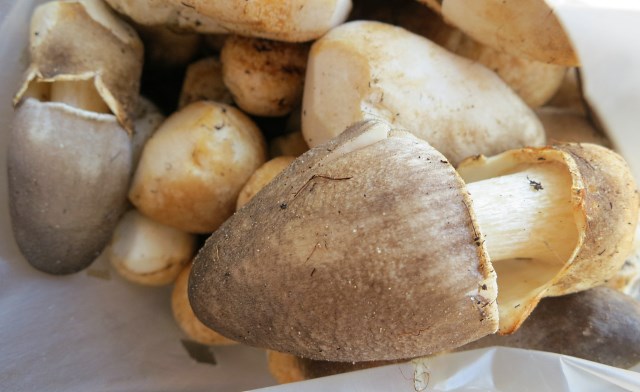The scent of a particular perfume could remind you of someone you love, while the aroma of sizzling satay smoke transports me back to the tantalizing taste of satay in Sipitang town. Considered the best satay in Sabah, Sipitang Satay is the town’s trademark food, just like how we have Tenom Coffee and Tuaran Noodle in Sabah.
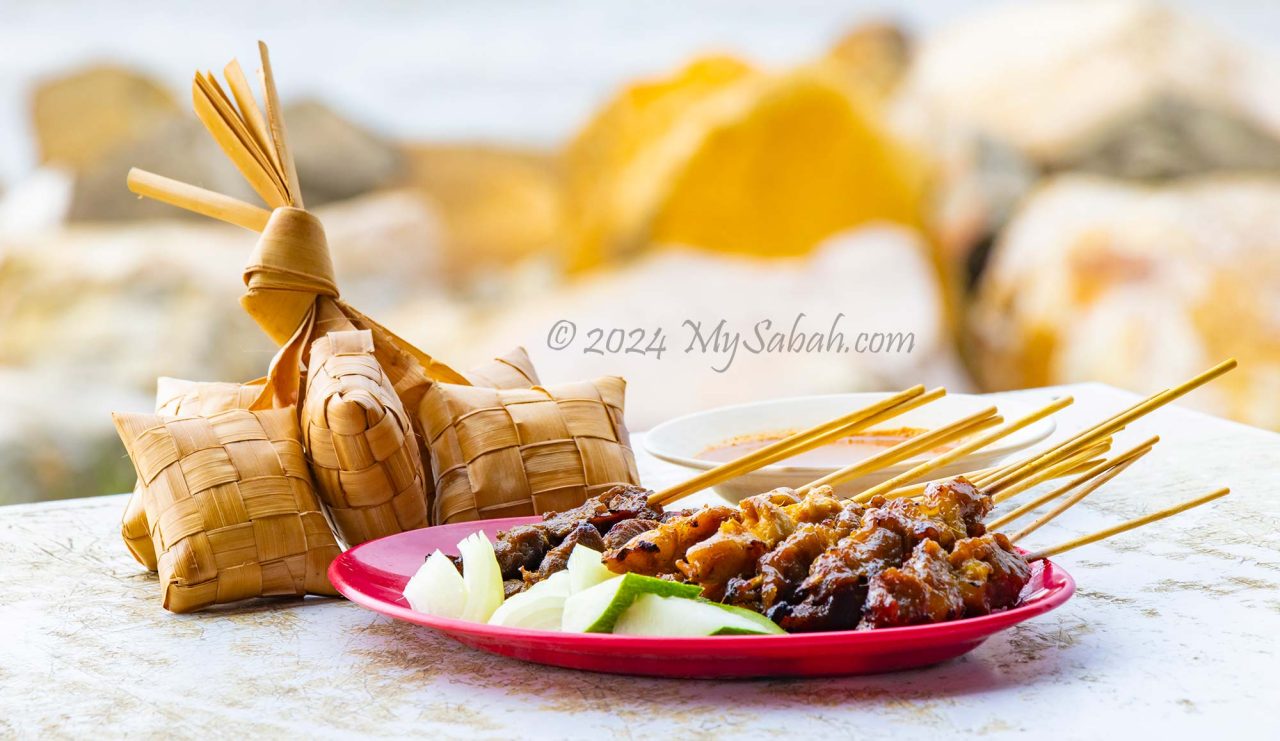
Sipitang, the biggest town near the Sabah-Sarawak border in Malaysia, is a popular pitstop for travelers heading between Sabah, Sarawak, and Brunei. Despite its small-town charm with no fancy malls or hotels, it’s a favorite spot to take a break, grab some delicious satay, and enjoy the coastal views after a long drive. And it’s from here that the fame of Sipitang Satay has spread across Borneo.
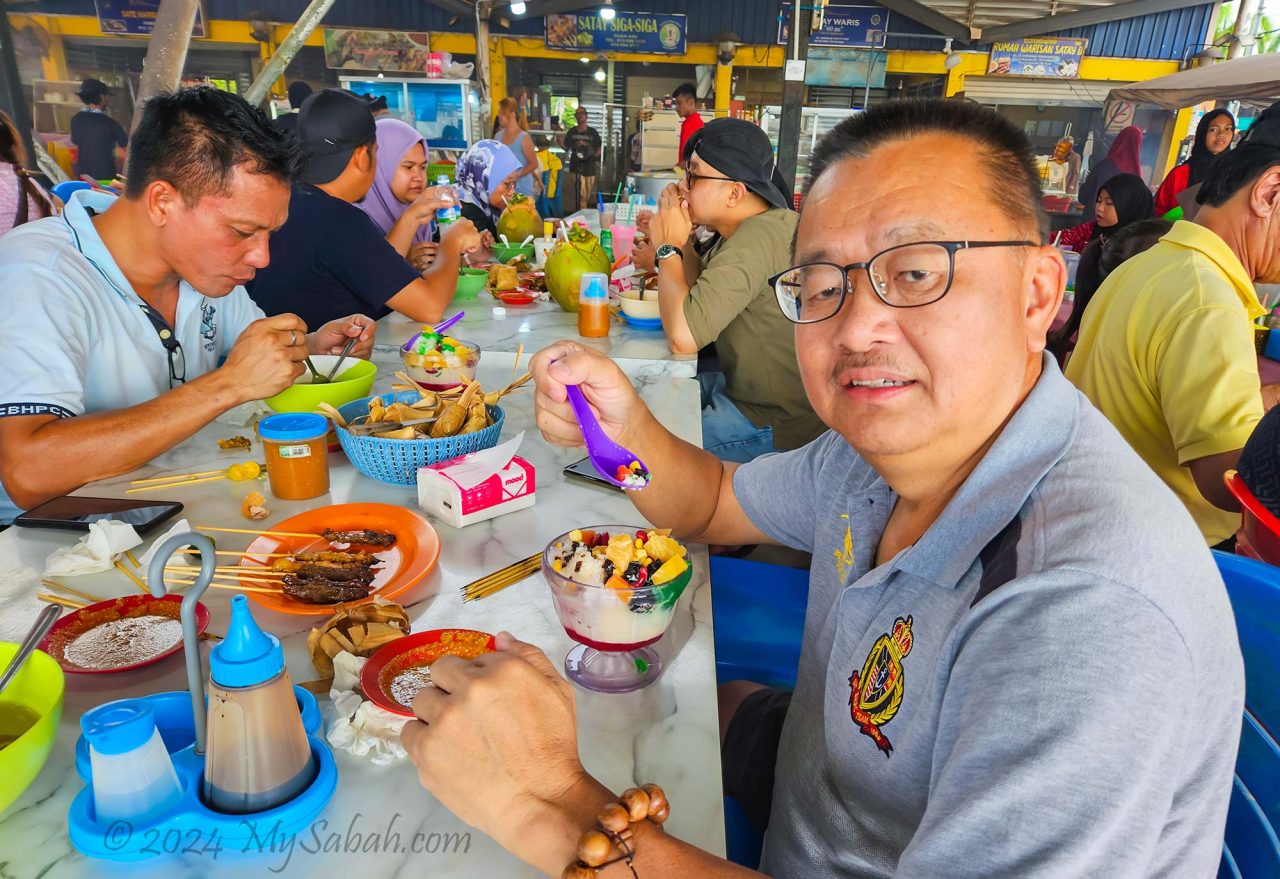
To uncover the secrets behind Sipitang Satay’s irresistible flavour, I embarked on a nearly three-hour drive from KK to Sipitang. As I arrived in Sipitang around noon, the tantalizing aroma of grilled satay filled the air, a signature scent of the town. Following the trail of smoke, I made my way to a bustling hawker centre housed in a white-roofed building at the esplanade.
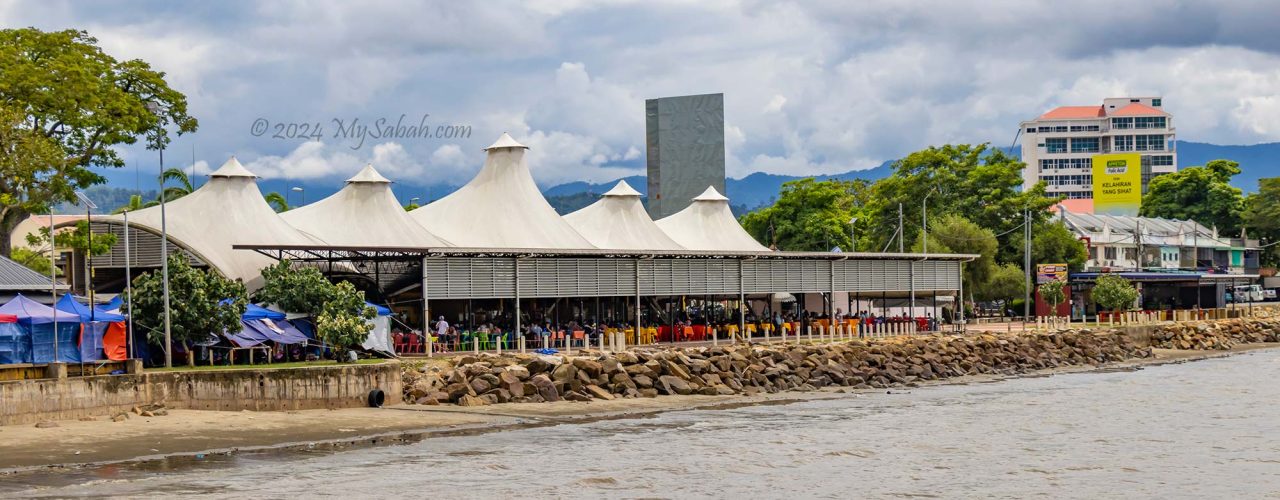
At the hawker centre, rows of colourful tables and chairs were occupied by approximately 20 stalls offering an array of satay and other local delicacies. It was a hub where one could indulge in three iconic Malaysian foods: satay, ketupat, and ABC (Mixed Ice Dessert). The tantalising aroma, enticing appearance, and sizzling sounds of the satay set my stomach rumbling. Legend has it that no one leaves this satay kingdom with an empty stomach, so I knew I had to eat.
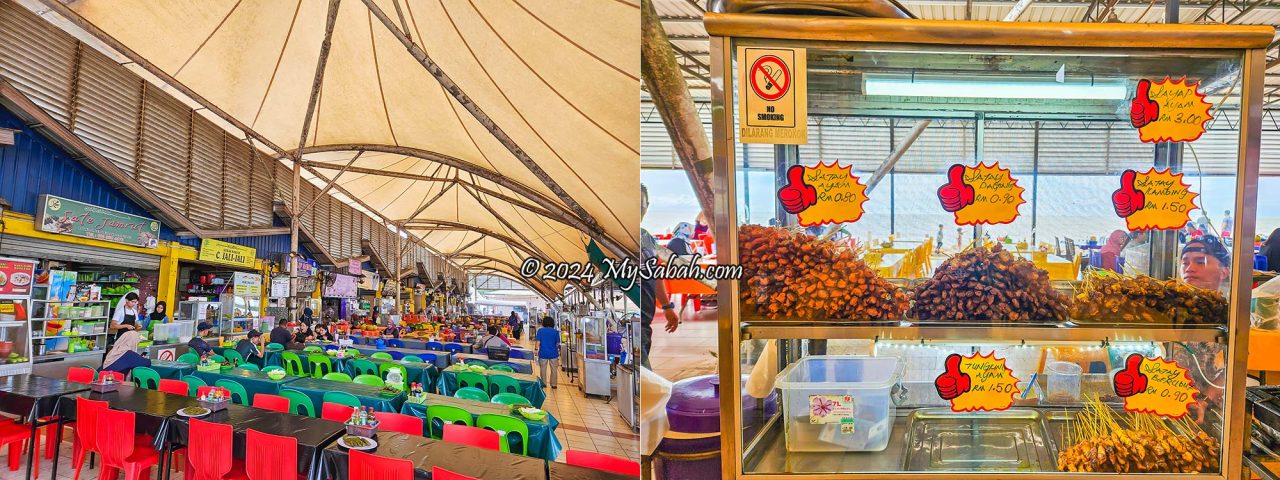
About Satay
For those unfamiliar with Malaysia’s most popular street food, satay (also known as sate or satai in Malay) originated from Java, Indonesia, and has existed since the 15th century. It’s a Southeast Asian form of kebab made from seasoned, skewered, and barbecued meat, typically served with a side sauce. Each country has its own unique way of preparing satay.
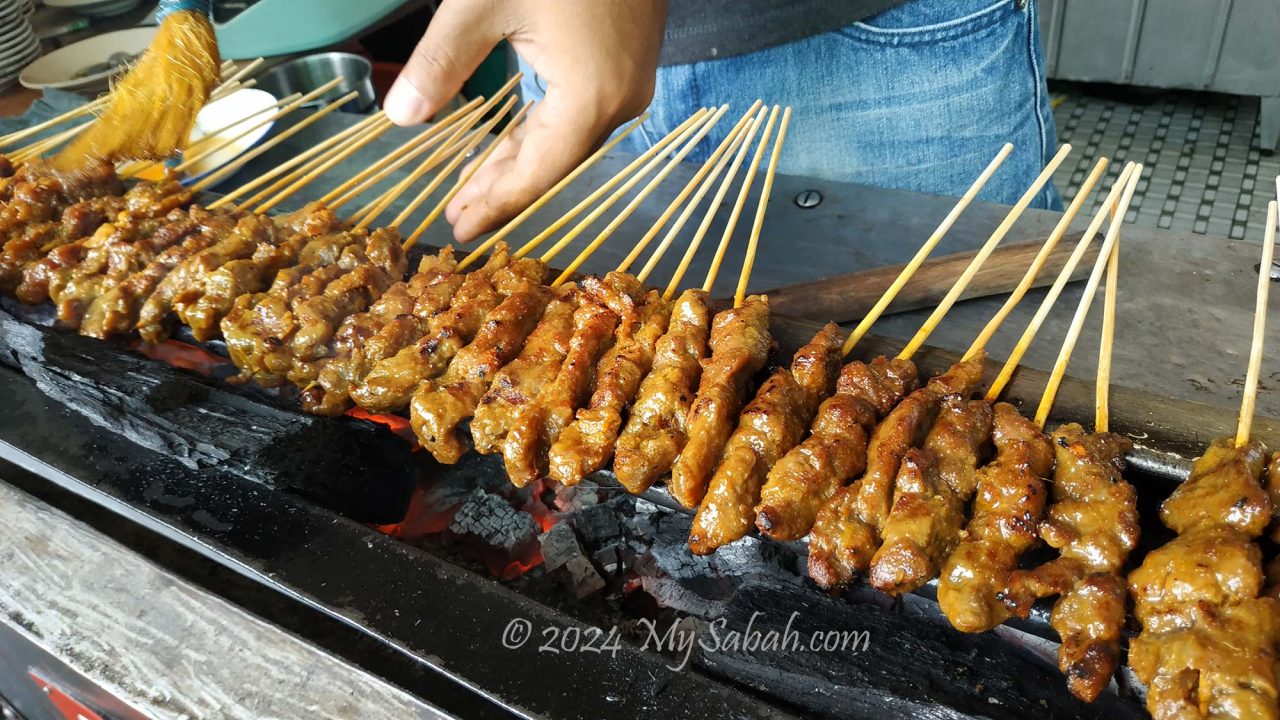
Malaysian satay is crafted from tender and juicy diced or sliced pieces of marinated chicken, beef, or lamb (or mutton). These meat pieces are skewered and barbecued over charcoal embers, imparting a delightful smoky and tangy flavour.
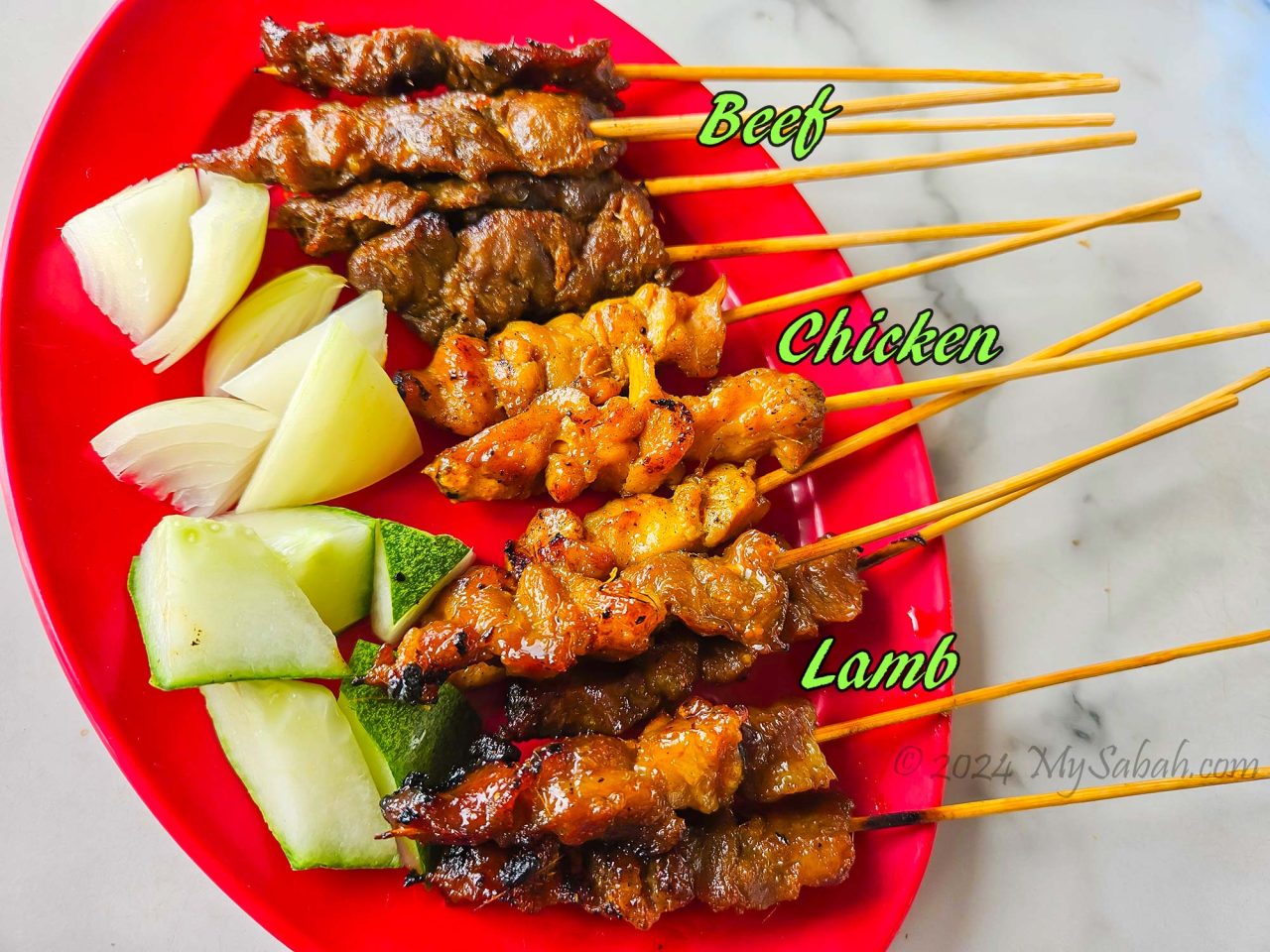
To fully savour your satay experience, dip each skewer into the thick peanut sauce (or satay sauce), which is considered the soul of satay. The savoury meat pairs wonderfully with the sweet and creamy sauce, enhancing the overall flavour and mouthfeel of the dish. The satay sauce typically comprises ground toasted peanuts, spices, and sugar. A well-made homemade peanut sauce can greatly enhance the taste of your satay.
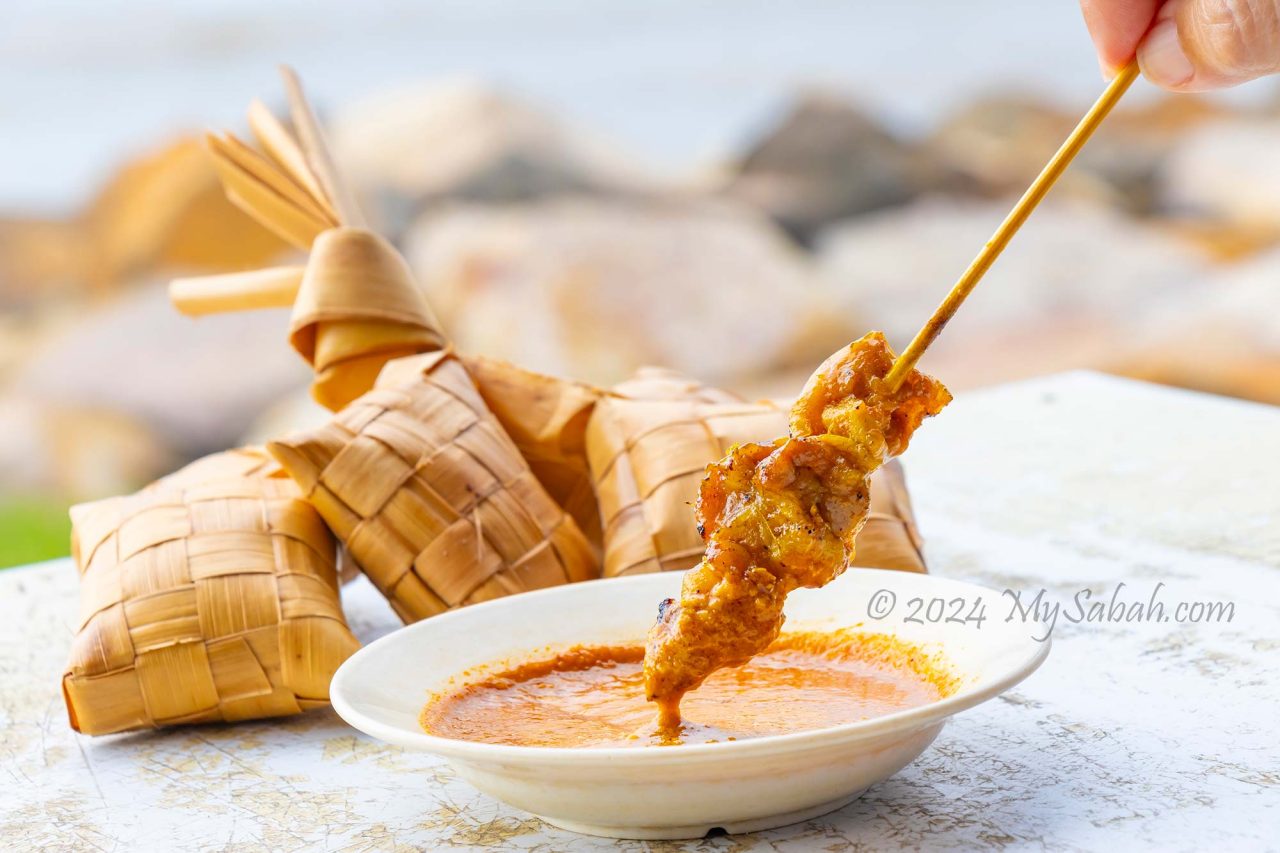
For a satisfying meal, accompany your satay with ketupat or kelupis rice cakes. Ketupat is compressed rice wrapped in coconut fronds, while kelupis is a traditional and sweet delicacy of the Orang Brunei of Sabah, made from glutinous rice and wrapped in leaves.
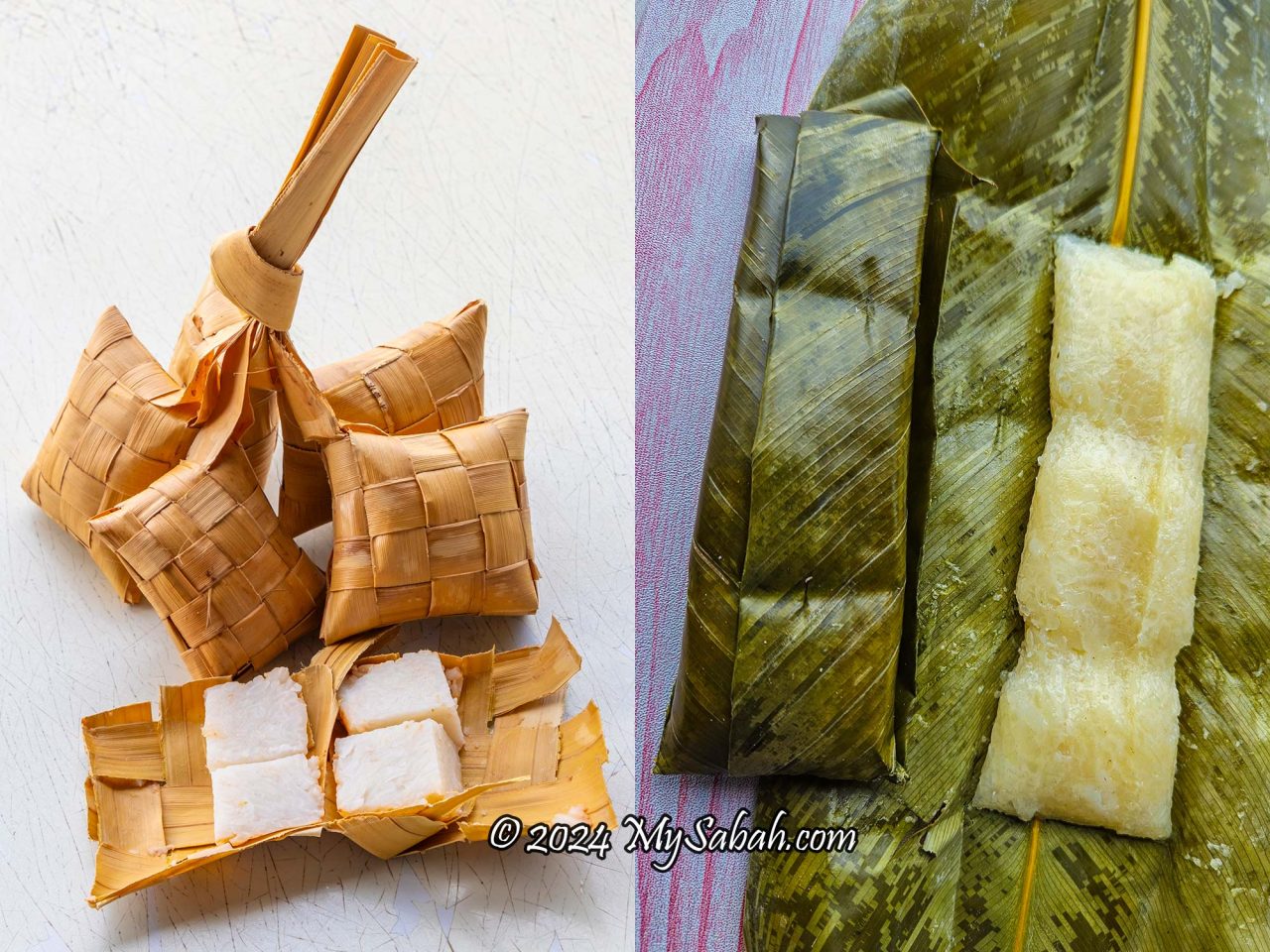
To complement your satay, diced cucumber and onions serve as refreshing condiments, helping to reduce the oily feel on your taste buds. While these vegetables are not typically provided by default at Sipitang stalls, you can always request them. The owner of Satay Siga-Siga kindly provided us with some for photography purposes.
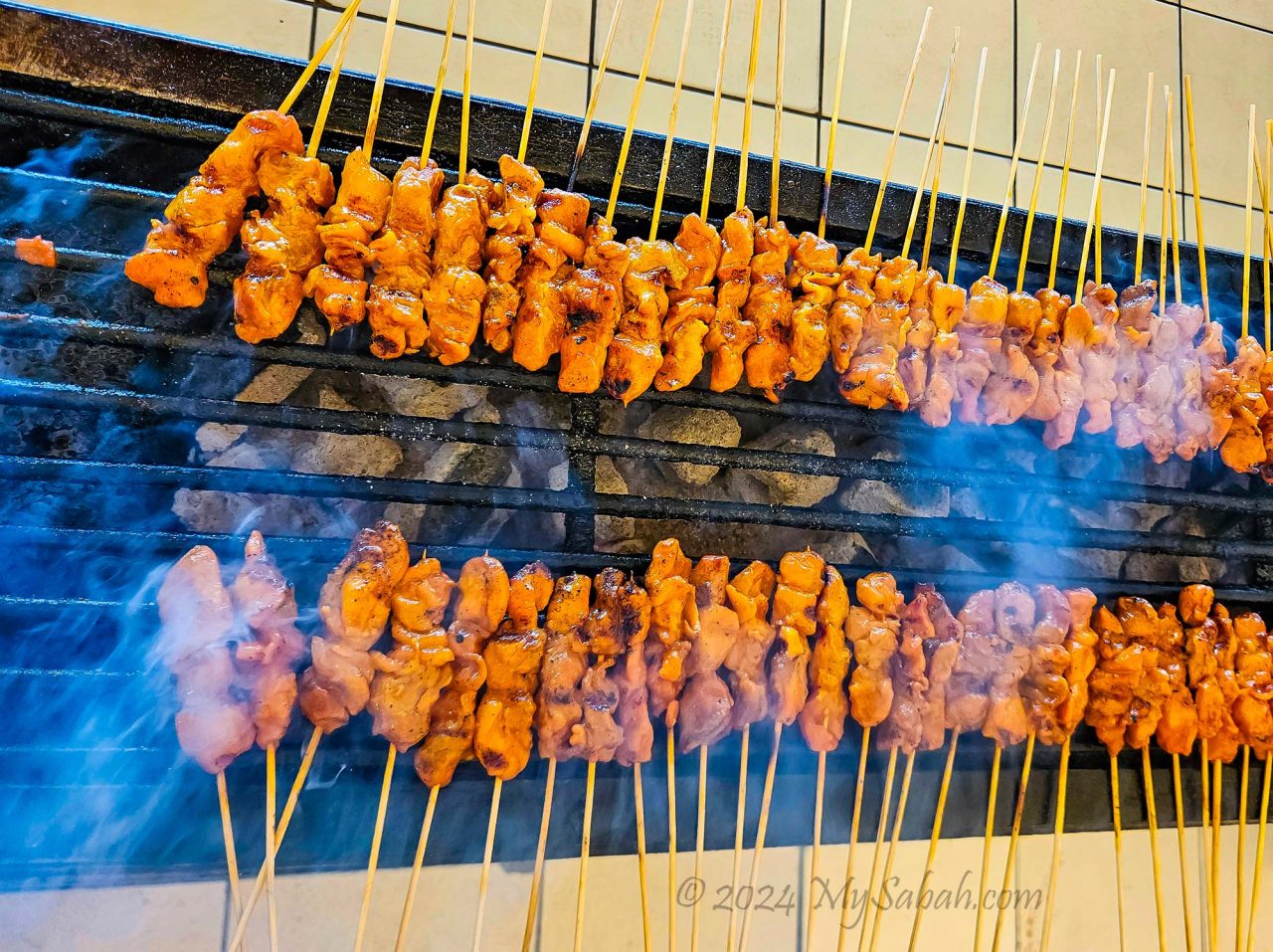
I highly recommend Satay Siga-Siga (they didn’t pay me to say this). You can verify my recommendation by checking out other online reviews. The seats at Satay Siga-Siga are always the first to be fully occupied, and even Bruneians know them.
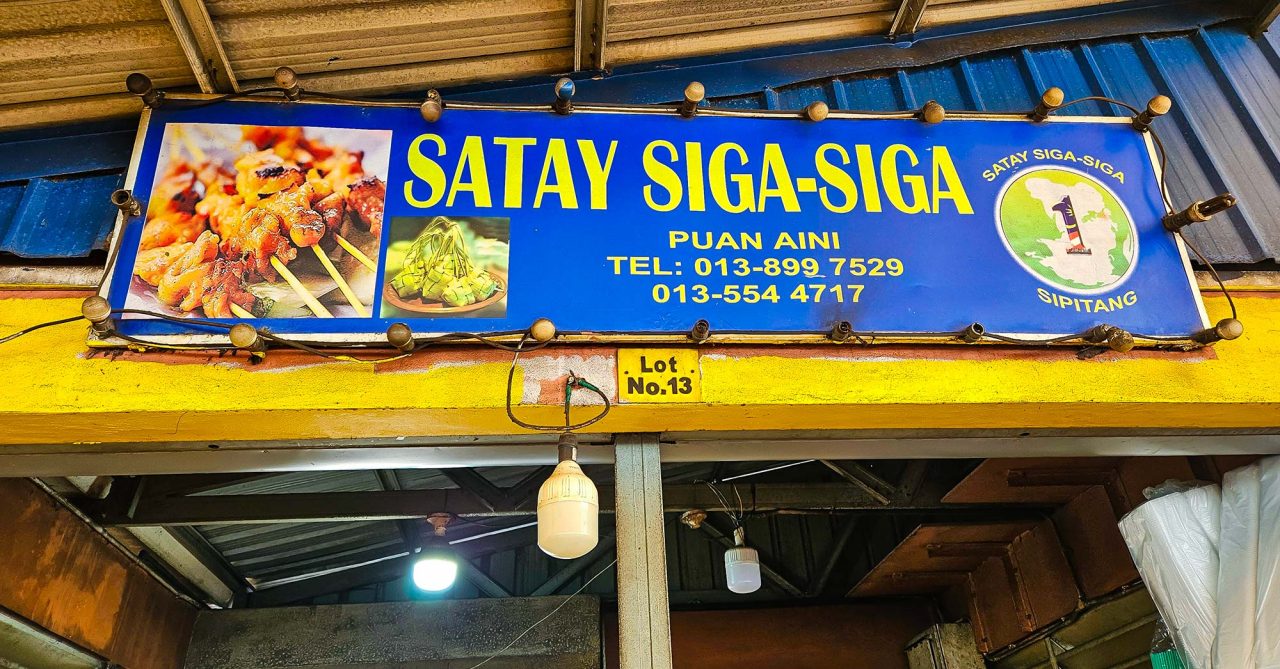
Types of Sipitang Satay
There are three main types of satay: beef (sate daging), chicken (sate ayam), and lamb (sate kambing), which are the best-selling varieties. Beef satay (sate daging) is favoured for its rich flavour and texture. Chicken satay (sate ayam) appeals to those who prefer tender white meat. Lamb satay (sate kambing) boasts the strongest flavour, ideal for those who appreciate its distinct goaty aroma, though it’s the most expensive option.
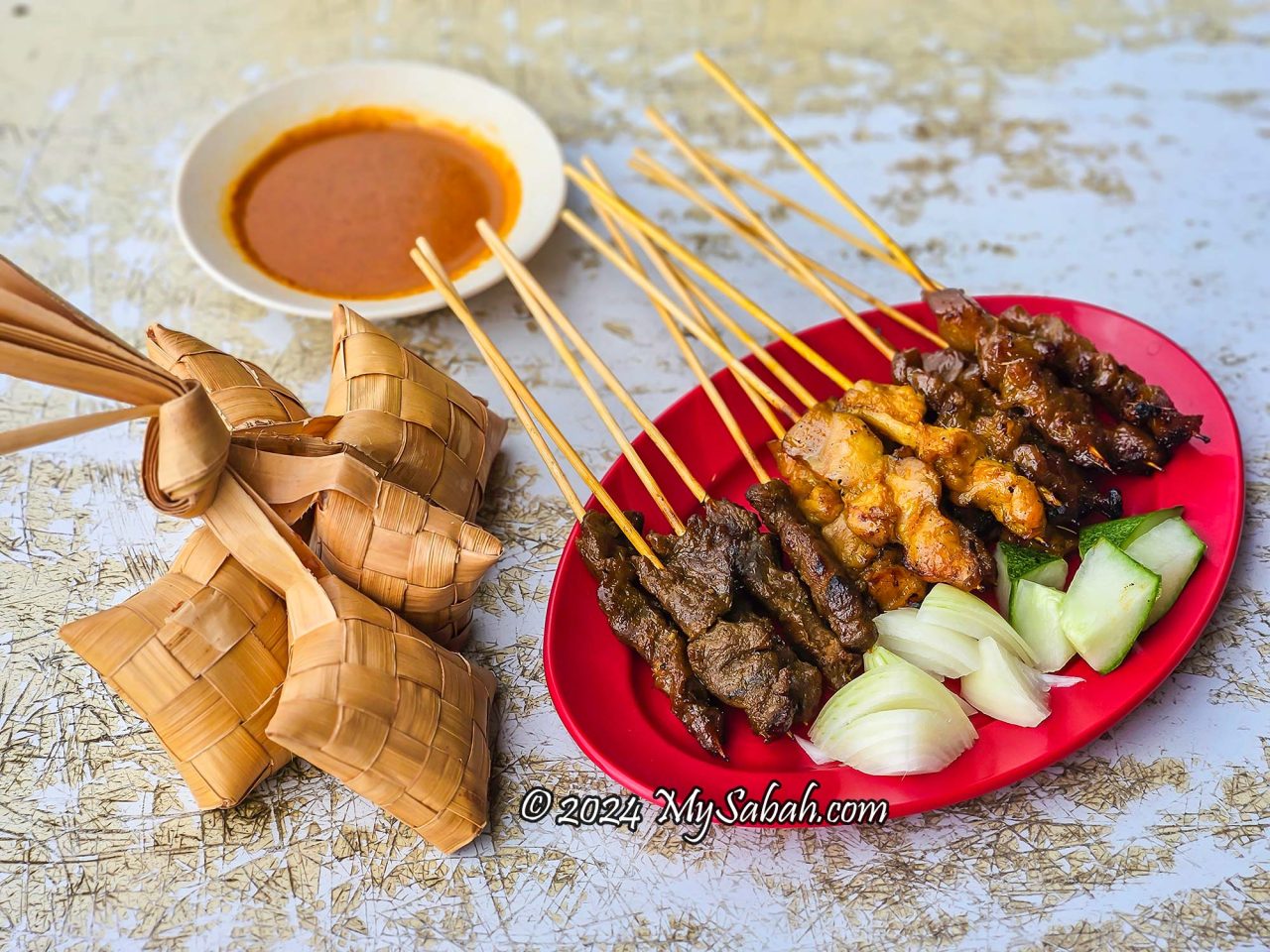
Another popular satay variety is Sate Tungking/Tongkeng/Buntut (chicken tail satay). Initially, the idea of eating ‘chicken butt’ may seem off-putting, but I became a fan after my first taste. While chicken tail is quite fatty, its meat is incredibly tender. The fat of Sate Buntut is grilled until it’s slightly burnt and crispy on the outside, allowing you to enjoy the juicy and springy meat. I usually only have 1 or 2 skewers before it starts feeling too greasy.
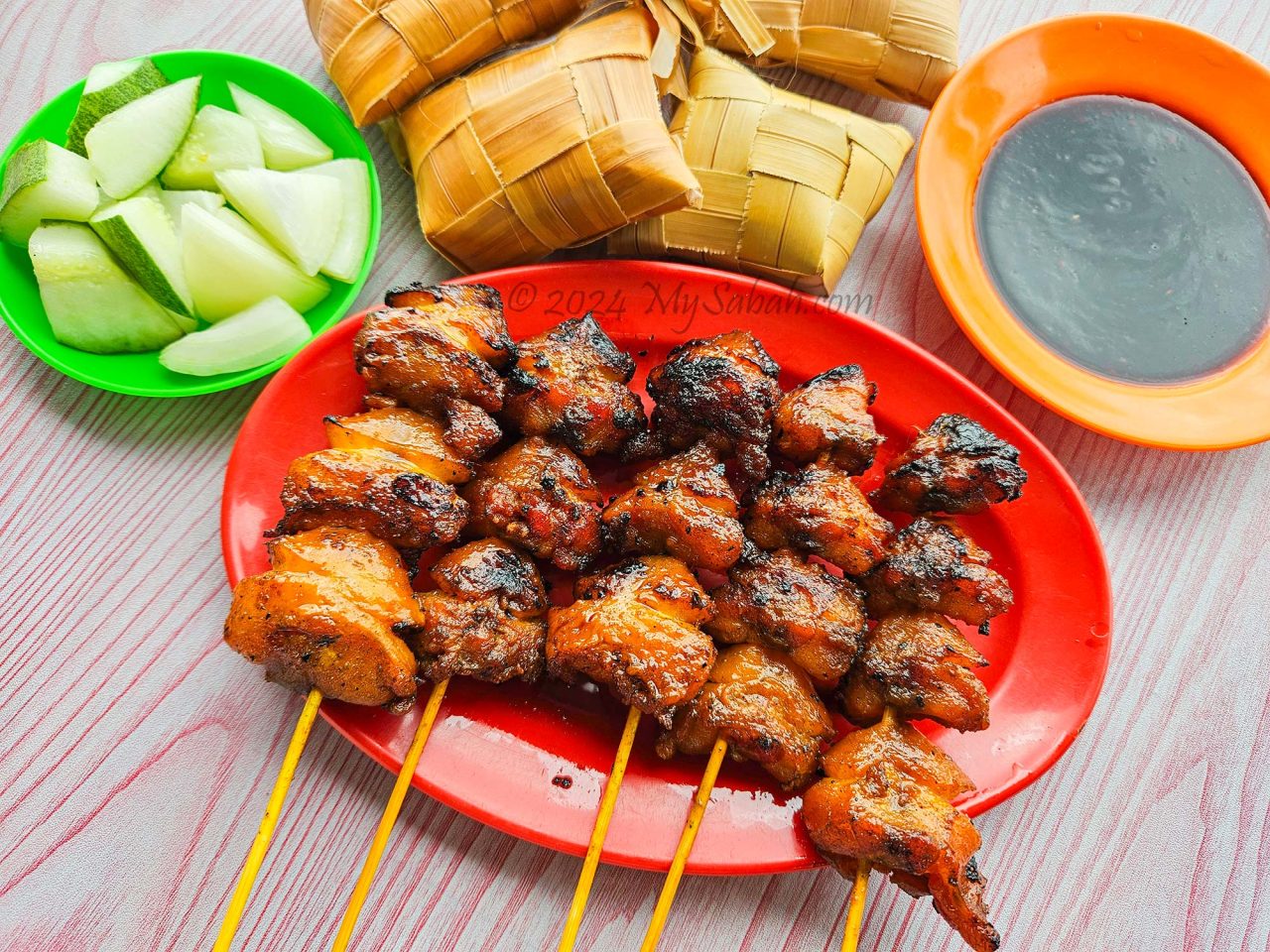
Sate Berubut (Beef Tripe Satay) and Hati Buyah (Beef Lungs Satay) taste like a soft version of jerky. While they offer interesting textures, I personally don’t find them very appetising, especially without seasoning. In fact, they can be rather bland. These varieties are definitely an acquired taste and may not be a safe choice for those who dislike offal. It’s worth noting that they often cost the same or even more than the more well-liked varieties of satay.
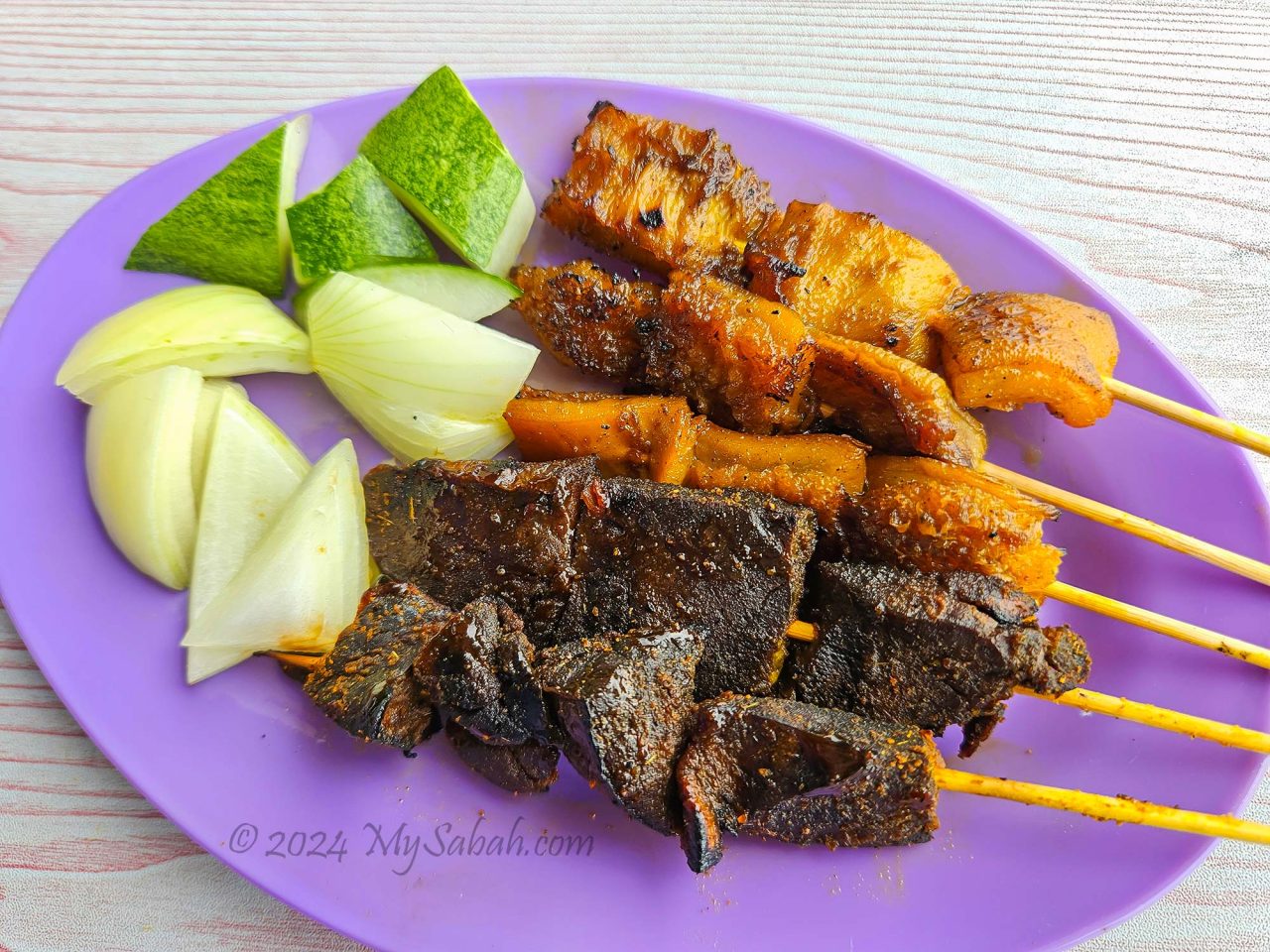
Why Sipitang Satay Tastes So Good?
The delicious taste of Sipitang Satay is only half of the story. Science can explain why Sipitang Satay stands out compared to equally good satay made elsewhere. Professor Charles Spence unraveled some of these secrets in his book ‘Gastrophysics: The New Science of Eating.’ Big firms like Nestle and PepsiCo also employ his formula to stimulate you to buy more.
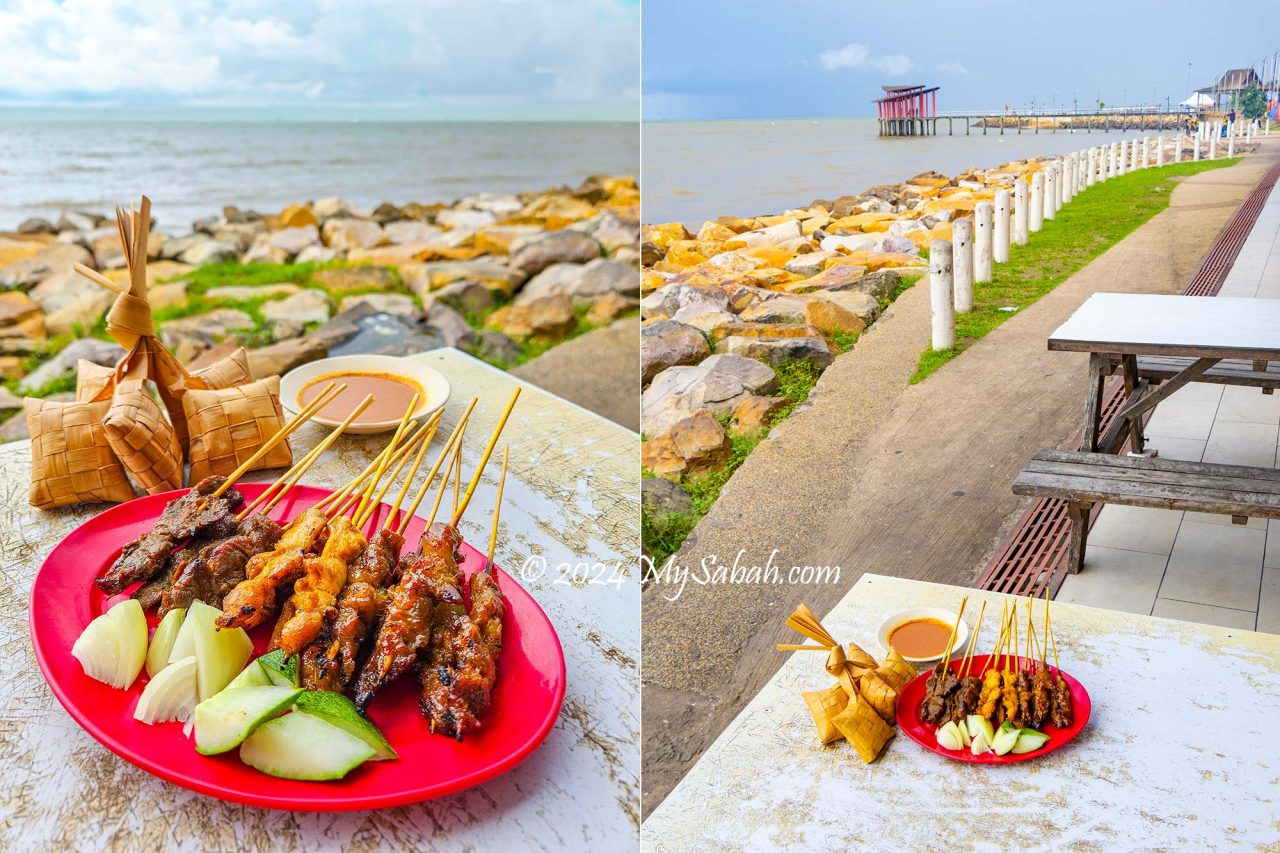
Over 20 years of research by Professor Charles Spence reveals that eating is a multisensory experience, engaging tastes, sights, sounds, smells, and emotions. These senses collectively shape our perception of food and contribute to the pleasure it brings. For instance, food may taste bland on airplanes due to the dampening effect of dry air, engine noise, low cabin pressure, and confined space on our senses.

The multisensory atmosphere of Sipitang town is shaped by several factors:
- Emotions: Many visitors to Sipitang are holidaymakers with their families, and their relaxed and positive moods heighten their senses, enhancing their enjoyment of the satay.
- Sights: The breathtaking panoramic sea view and stunning sunset at Sipitang Esplanade add to the overall experience.
- Sounds: The soothing sea breeze and gentle lull of the waves create a relaxing auditory backdrop.
- Smells: The tantalising aroma of sizzling satay permeates the air, further enriching the sensory experience.
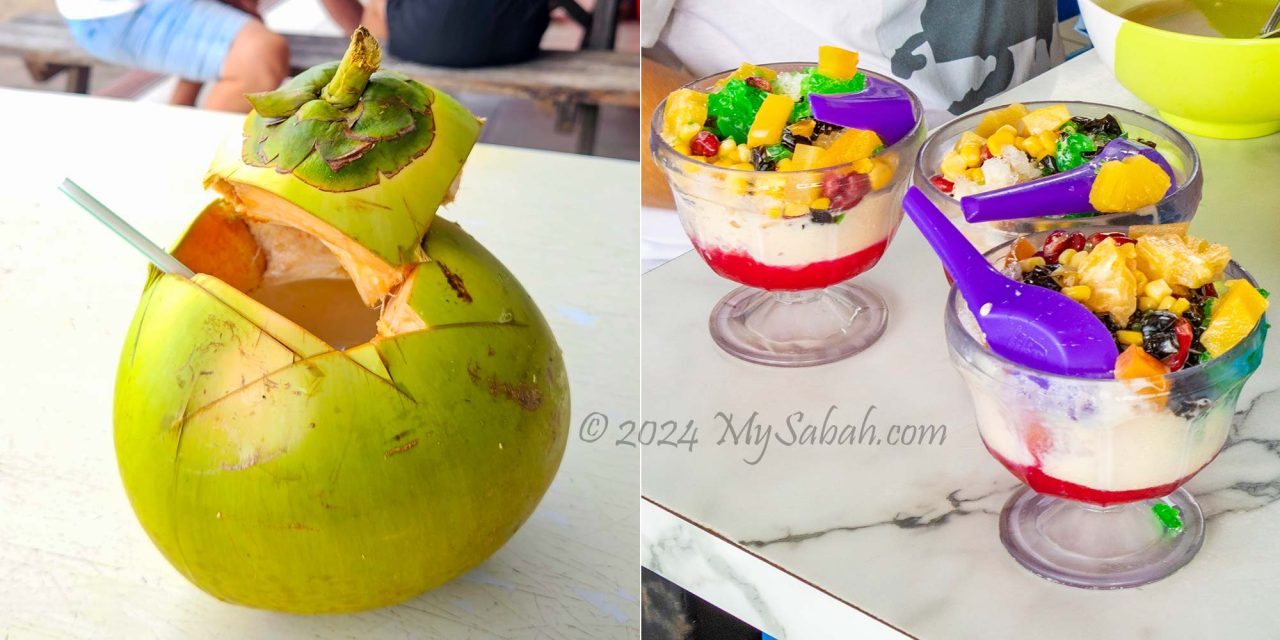
Fine dining restaurants use classy background music, expensive cutlery, fancy decorations, and creative plating to offer a multisensory dining experience, so they can charge you three-digit prices for a meal. In contrast, the one-dollar satay in Sipitang is truly a steal for foodies.

How to Get There
To get to the hawker centre selling Sipitang Satay, head approximately 140 km south of Kota Kinabalu City (KK) to the esplanade in the centre of Sipitang town (see Location Map or Street Map). The drive takes about 2 hours and 40 minutes on asphalt roads of fair condition.

As it’s a long journey, consider turning it into a road trip and exploring other towns such as Papar, Bongawan and Beaufort along the way. Keep in mind that during school holidays, Sipitang Satay may sell out earlier than usual.
Photos taken in Sipitang, Sabah, Malaysia Borneo
